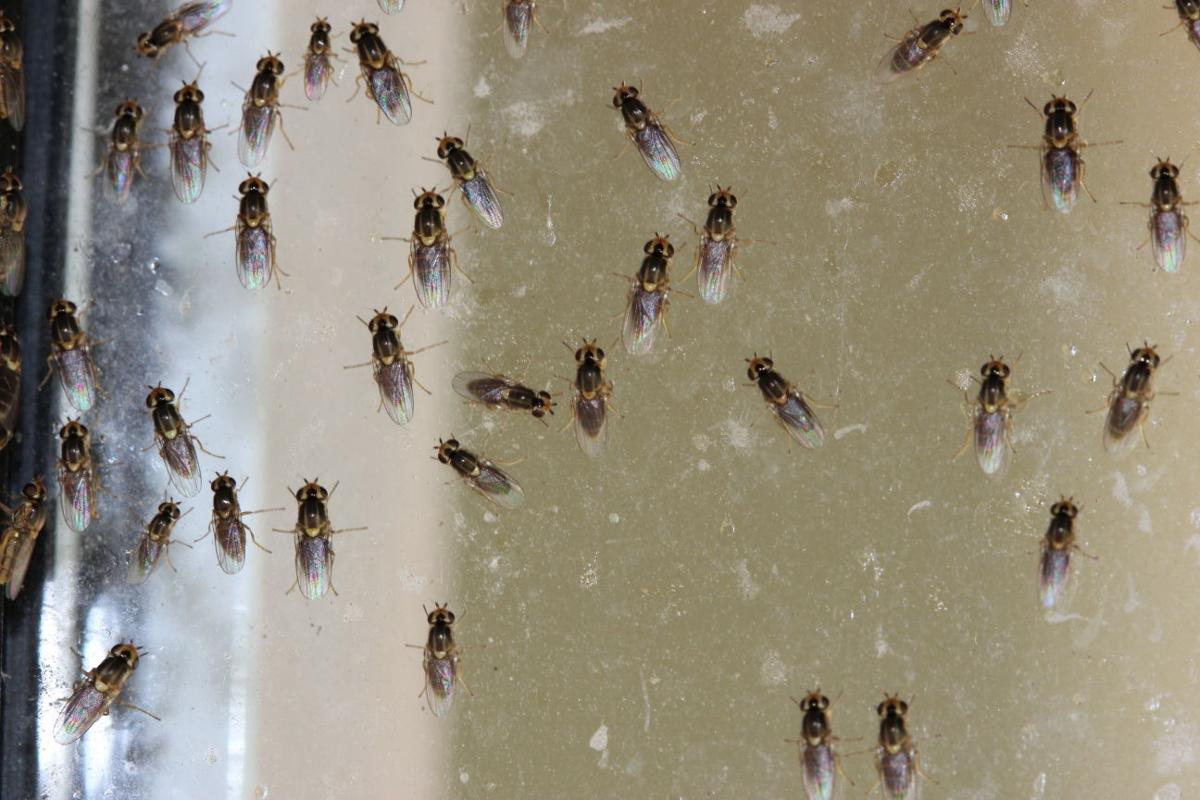Q: I would like to know the species and life habits of the tiny, submillimeter-length insects that hover around your face and unceasingly try to get into your ears and nostrils. They emit a high-pitched hum close up. In all creation, there is no more annoying animal. Can anything be done to discourage them?
A: You are likely seeing one or more species of flies. Determining which species would be difficult without examining them under a microscope. There are about 290 species in North America. The ones that try to get into your eyes, nose, and ears go by a variety of common names including grass flies, stem-miner flies, eye gnats, and pecker gnats. They are attracted to moist locations so the eyes are a common target and can be vectors of pink eye so it’s good to wash them out if you get them in your eyes. These flies typically breed in areas where there is food and moisture. For some, their food is grass species, some others are scavengers of animal products, and a few feed on insects. In my experience, we see a spike in their populations of flying adults during and immediately after the summer monsoon season. Discouraging them is best accomplished the same way we discourage their relatives, the mosquitoes. Reduce places that have standing water after a rain so they are less likely to breed nearby. There are insecticides that work but they only kill on contact and there are probably billions of flies active at one time so you might kill a few and then the survivors move in to reclaim the space. This is yet another group of insects that reminds us that we are only sharing space with this enormous, diverse, and highly successful class of animals that predates us by close to 350 million years and will likely still be in charge when we are long gone.
People are also reading…
Peter L. Warren is the urban horticulture agent for the Pima County Cooperative Extension and the University of Arizona. Email: plwarren@cals. arizona.edu










